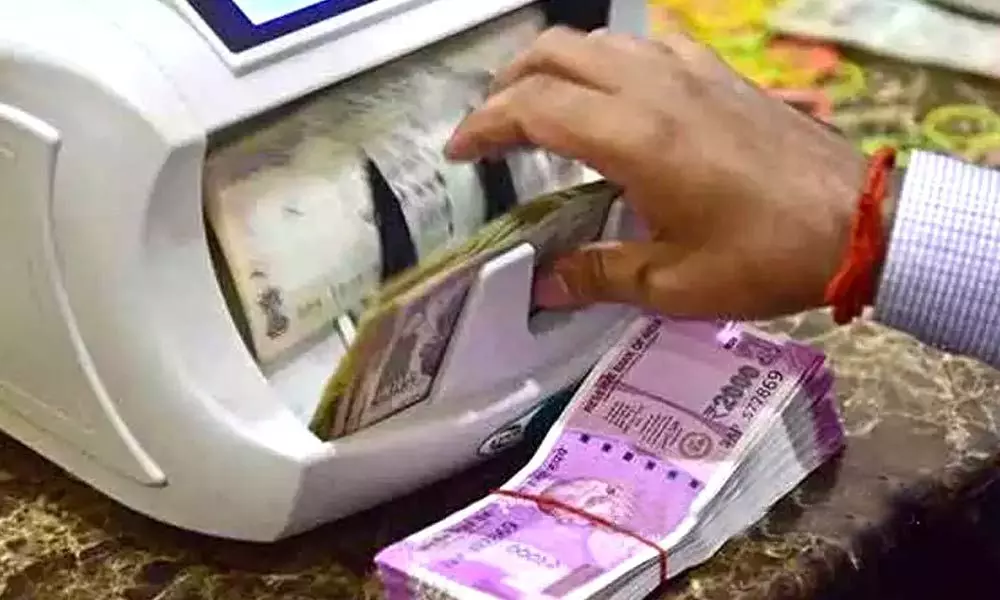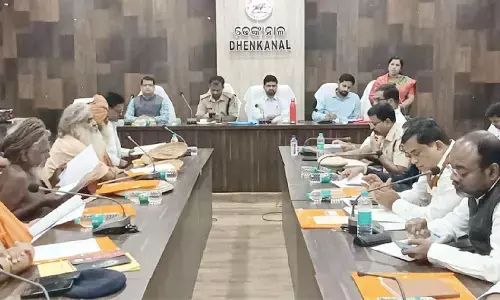Fake currency case: Value of fake currency seized rises 76% post demonetization. How successful was demonetization?
 Represented Image
Represented ImageNew data from the National Crimes Record Bureau (NCRB) shows that fake Indian currency notes worth Rs 28.1 crore were seized in 2017, which is nearly double the value of the counterfeit currency that was seized in 2016 (Rs 15.1 crore).
New data from the National Crimes Record Bureau (NCRB) shows that fake Indian currency notes worth Rs 28.1 crore were seized in 2017, which is nearly double the value of the counterfeit currency that was seized in 2016 (Rs 15.1 crore).
According to the 'Crime in India – 2017' report (pages 1261-to-1263), which was released this week, the total number of counterfeit notes that were seized in 2017 was 3.55 lakh. This is substantially higher than the number of fake notes that were seized by authorities in 2016 (2.81 lakh).
The report also comes with a region-wise analysis, which shows that Gujarat was the state in which the highest value of the fake currency was seized (Rs 9 crore), followed by Delhi (Rs 6.7 crore), Uttar Pradesh (Rs 2.8 crore) and West Bengal (Rs 1.9 Crore)
Pretend Indian foreign money notes value Rs 28.1 crore had been seized in 2017, virtually doubling from the earlier 12 months' mark of Rs 15.9 crore, based on the Crime in India-2017 report put collectively by the Nationwide Crime Information Bureau (NCRB).
The report factors out that the brand new Rs 2,000 be aware, launched after the November 2016 demonetisation, accounted for Rs 14.97 crore of the foreign money seized in 2017.
The overall variety of notes seized had been three,55,994, a 26 per cent rise from 2016 when 2,81,839 pretend notes had been seized. Of those, there have been 65,731 outdated Rs 1,000 notes, 1,02,815 had been outdated Rs 500 notes, eight,879 had been new Rs 500 notes and 92,778 had been Rs 100 notes.
Whereas saying demonetisation on eight November 2016, Prime Minister Narendra Modi had stated the transfer would battle black cash, corruption and terror funding. He stated the outdated Rs 500 and Rs 1,000 notes would not be authorized tender, and would simply be "worthless pieces of paper". The PM had additionally urged individuals to "be part of this mahayagya towards the ills of corruption".
Nonetheless, the NCRB report says the nation's banks acquired an all-time excessive quantity of faux foreign money. The report added that banks detected an over 480 per cent leap in suspicious transactions post-demonetisation.
History reveals that practices of counterfeiting tend to taper off over time, as people begin to familiarise themselves with the currency. "But nonetheless, this, for sure will be a challenge for as long as people are not fully familiar with such notes, getting tricked into accepting them as payment," Sabnavis said.
How states & union territories fared
A state/union territory-wise evaluation confirmed that Gujarat topped the checklist with pretend foreign money value over Rs 9 crore seized. This was adopted by Delhi (Rs 6.7 crore), Uttar Pradesh (Rs 2.eight crore) and West Bengal (Rs 1.9 crore).
A complete of two,272 counterfeit Rs 2,000 notes had been seized over 53 days, with Gujarat accounting for 1,300 of those notes.
In 2016, Delhi had accounted for over Rs 5.6 crore value of faux foreign money, adopted by Gujarat (Rs 2.37 crore) and West Bengal (Rs 2.32 crore).
Probably the most variety of FIRs linked to pretend foreign money had been registered in Uttar Pradesh (181), adopted by West Bengal (146), Maharashtra (75) and Gujarat (71).
Elements behind India's pretend foreign money downside
Requested in regards to the causes behind the rise in pretend foreign money in India, Madan Fadnavis, chief economist at CARE Scores, advised LiiStudio that a whole lot of it has to do with how the federal government launched new foreign money notes at totally different phases in addition to the brand new colours.
Nonetheless, N.R. Bhanumurthy, the professor on the Nationwide Institute of Public Finance and Coverage, felt this could possibly be seen as a constructive end result of demonetisation, as at the least now one is ready to distinguish pretend notes from real ones.
"Although it is still not clear whether the Rs 10 coin is considered fake or will be considered valid or not, since it's not universally applicable across the country yet," Bhanumurthy stated.




















